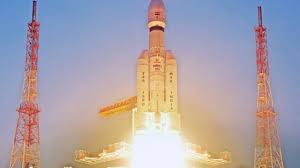
1. Meet the Heavyweight: LVM3-M5 'Bahubali' 💪
· isro successfully launched its heaviest communication satellite from indian soil.
· The launch vehicle used: LVM3-M5, nicknamed ‘Bahubali’ for its sheer power and payload capacity.
· Capable of lifting over 4,400 kg to Geostationary Transfer Orbit (GTO), making it India’s premier heavy-lift rocket.
2. Where It Happened 🌏
· The launch took place at Sriharikota, Andhra Pradesh, a key site for India’s space missions.
· The mission is a landmark in India’s space capabilities, underlining its ability to handle larger satellites domestically.
3. Why 4,400 kg Is Just Part of the Story ⚖️
· Beyond payload weight, the precision, reliability, and versatility of LVM3-M5 make it strategically important.
· It can carry multiple satellites simultaneously, enabling cost-effective and complex missions.
· The rocket’s advanced propulsion and guidance systems showcase ISRO’s cutting-edge engineering.
4. Strategic & Commercial Implications 🌐
· Strengthens India’s position in the global commercial satellite launch market, attracting international payloads.
· Supports national communication, defense, and scientific missions with heavier satellites, reducing dependence on foreign launch vehicles.
5. Boost to India’s Space Ambitions 🚀
· LVM3-M5 is crucial for future lunar, interplanetary, and manned missions.
· Demonstrates India’s growing mastery of heavy-lift technology, a stepping stone toward larger missions like Gaganyaan (manned spaceflight).
6. Key Takeaway 🌟
· The launch proves isro is not just lifting heavy satellites but also pushing India’s space tech frontier, enabling strategic autonomy and global competitiveness.
Disclaimer:
The views and opinions expressed in this article are those of the author and do not necessarily reflect the official policy or position of any agency, organization, employer, or company. All information provided is for general informational purposes only. While every effort has been made to ensure accuracy, we make no representations or warranties of any kind, express or implied, about the completeness, reliability, or suitability of the information contained herein. Readers are advised to verify facts and seek professional advice where necessary. Any reliance placed on such information is strictly at the reader’s own risk.




 click and follow Indiaherald WhatsApp channel
click and follow Indiaherald WhatsApp channel